 Common Problem
Common Problem What is the information exchange code currently commonly used in the Spanish field?
What is the information exchange code currently commonly used in the Spanish field?The information exchange code currently commonly used in the Spanish field is ASCII code. ASCII code, also known as the American Standard Code for Information Interchange, is a computer coding system based on the Latin alphabet, mainly used to display modern English and other Western European languages. ASCII code uses a specified combination of 7- or 8-bit binary numbers to represent 128 or 256 possible characters, which can represent all uppercase and lowercase letters, numbers 0 to 9, punctuation marks, and special control characters used in American English. .

The operating environment of this tutorial: Windows 7 system, Dell G3 computer.
The Western character encoding widely used in computers is the American Standard Information Interchange Code, whose English abbreviation is ASCII.
ASCII (American Standard Code for Information Interchange, American Standard Code for Information Interchange): It is a computer coding system based on the Latin alphabet, mainly used to display modern English and other Western European languages. It is the most common standard for information exchange and is equivalent to the international standard ISO/IEC 646.
ASCII was first published as a standardized type in 1967, and was last updated in 1986. So far, a total of 128 characters have been defined.
The reason for ASCII
In computers, all data must be represented by binary numbers when storing and operating (because computers use high and low levels (representing 1 and 0 respectively), for example, 52 letters (including uppercase letters) like a, b, c, d, numbers such as 0 and 1, and some commonly used symbols (such as *, #, @, etc.) in computers Binary numbers must also be used when storing. As for which binary numbers are used to represent which symbols, of course everyone can agree on their own set (this is called encoding). If everyone wants to communicate with each other without causing confusion, then Everyone must use the same encoding rules, so the relevant standardization organizations in the United States introduced ASCII encoding, which uniformly stipulates which binary numbers are used to represent the above common symbols.
The American Standard Code for Information Interchange was developed by the American National Standard Institute (ANSI) and is a standard single-byte character encoding scheme for text-based data. It was originally an American national standard and was used as a common Western character encoding standard for different computers to communicate with each other. Later, it was established as an international standard by the International Organization for Standardization (ISO), called the ISO 646 standard. Applies to all Latin script letters.
ASCII expression
ASCII code uses a specified 7-bit or 8-bit binary number combination to represent 128 or 256 possible characters. Standard ASCII code, also called basic ASCII code, uses 7 binary digits (the remaining 1 binary digit is 0) to represent all uppercase and lowercase letters, numbers 0 to 9, punctuation marks, and special controls used in American English. character.
Among them:
0~31 and 127 (33 in total) are control characters or special communication characters (the rest are displayable characters)
Such as control characters: LF (line feed), CR (carriage return), FF (page feed), DEL (delete), BS (backspace), BEL (ring), etc.;
Special characters for communication: SOH (head of text), EOT (end of text), ACK (confirmation), etc.;
ASCII values of 8, 9, 10 and 13 are converted to backspace, tab, line feed and Enter character. They do not have a specific graphic display, but will have different effects on text display depending on the application.
-
32~126 (95 in total) are characters (32 is a space), of which 48~57 are ten Arabic numerals from 0 to 9.
65~90 are 26 uppercase English letters, 97~122 are 26 lowercase English letters, and the rest are some punctuation marks, arithmetic symbols, etc.
Also note that in standard ASCII, its highest bit (b7) is used as a parity bit. The so-called parity check refers to a method used to check whether errors occur during code transmission. It is generally divided into two types: odd check and even check. Odd parity rules: the number of 1's in a byte of the correct code must be an odd number. If it is not an odd number, add 1 to the highest bit b7; even parity rules: the number of 1's in a byte of the correct code must be an even number. , if it is not an even number, add 1 [1] to the highest bit b7.
The last 128 are called extended ASCII codes. Many x86-based systems support the use of extended (or "high") ASCII. Extended ASCII allows the 8th bit of each character to be used to determine an additional 128 special symbol characters, foreign letters, and graphic symbols.
Extended knowledge: size rules
The size rules of common ASCII codes: numbers
1. Numbers are smaller than letters. Such as "7"
2. The number 0 is smaller than the number 9, and increases in sequence from 0 to 9. Such as "3"
3. The letter A is smaller than the letter Z, and increases in order from A to Z. Such as "A"
4. The uppercase letters of the same letter are 32 smaller than the lowercase letters. Such as "A"
The ASCII code sizes of several common letters: "A" is 65; "a" is 97; "0" is 48
For more related knowledge, please visit FAQ Column!
The above is the detailed content of What is the information exchange code currently commonly used in the Spanish field?. For more information, please follow other related articles on the PHP Chinese website!
 把逻辑地址转换为内存物理地址的过程称作什么Jul 14, 2022 pm 02:52 PM
把逻辑地址转换为内存物理地址的过程称作什么Jul 14, 2022 pm 02:52 PM把逻辑地址转换为内存物理地址的过程称作“重定位”。程序发出的逻辑地址并不是数据或指令的真实存放地,但可以对这个地址进行转换来获得真实存放地的物理地址,相当于重新定位一次。
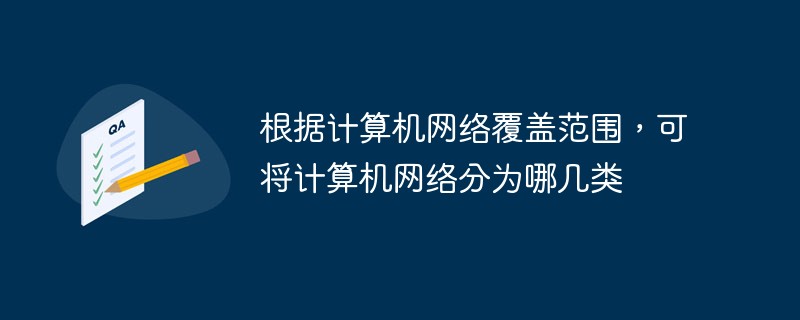 根据计算机网络覆盖范围,可将计算机网络分为哪几类Jul 12, 2022 pm 05:13 PM
根据计算机网络覆盖范围,可将计算机网络分为哪几类Jul 12, 2022 pm 05:13 PM根据计算机网络覆盖范围,可将计算机网络分为三类:1、局域网(LAN),是一种在小区域内使用的,由多台计算机组成的网络,覆盖范围通常局限在10千米范围之内;2、广域网(WAN),是一种远程网,涉及长距离的通信,覆盖范围可以是个国家或多个国家,甚至整个世界;3、城域网(MAN),其网络覆盖范围通常可以延伸到整个城市,借助通信光纤将多个局域网联通公用城市网络形成大型网络。
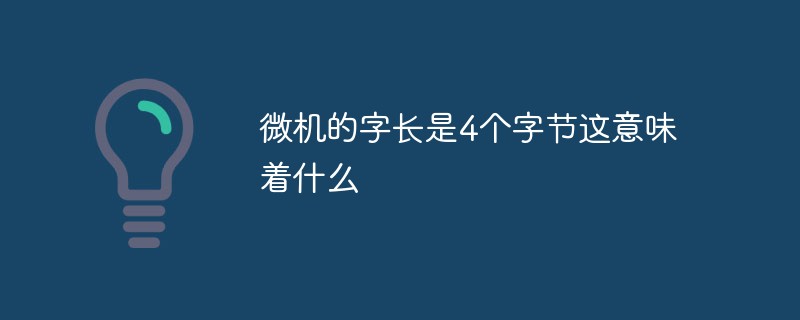 微机的字长是4个字节这意味着什么Jul 08, 2022 pm 12:04 PM
微机的字长是4个字节这意味着什么Jul 08, 2022 pm 12:04 PM微机的字长是4个字节意味着:在CPU中整体传输和处理的二进制数为32位。因为一个字节是8位长(字长),所以4个字节就是32位了,也就是说cpu中能够同时处理32位的二进制数据。在计算机领域,字是用来表示一次性处理事务的固定长度;一个字的位数,即字长,是计算机一次可处理的二进制数字的数目。
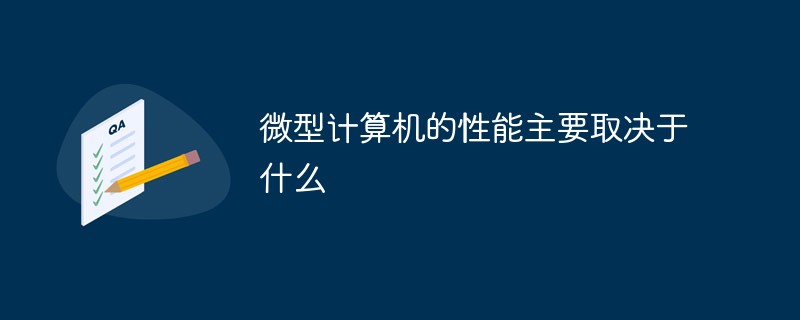 微型计算机的性能主要取决于什么Jul 13, 2022 pm 03:40 PM
微型计算机的性能主要取决于什么Jul 13, 2022 pm 03:40 PM微型计算机的性能主要取决于CPU(中央处理器)的性能。CPU是计算机系统的运算和控制核心,是对计算机的所有硬件资源(如存储器、输入输出单元) 进行控制调配、执行通用运算的核心硬件单元;中央处理器(CPU)的性能对计算机性能起决定性作用。
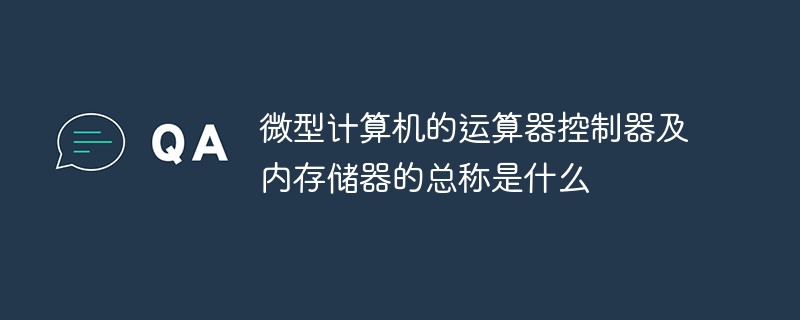 微型计算机的运算器控制器及内存储器的总称是什么Jul 14, 2022 pm 02:39 PM
微型计算机的运算器控制器及内存储器的总称是什么Jul 14, 2022 pm 02:39 PM微型计算机的运算器控制器及内存储器的总称是“主机”。在微型计算机中,运算器、控制器、存储器三个部分是信息加工、处理的主要部件;运算器和控制器总称为CPU(中央处理单元),而CPU与内存储器又总称为主机,这是计算机系统中最核心的硬件部分。
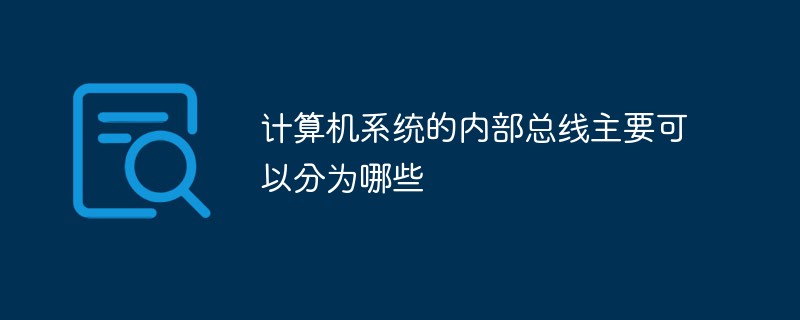 计算机系统的内部总线主要可以分为哪些Jul 11, 2022 pm 02:38 PM
计算机系统的内部总线主要可以分为哪些Jul 11, 2022 pm 02:38 PM计算机系统的内部总线主要可以分为5类:1、数据总线,在CPU与RAM之间来回传送需要处理或是需要储存的数据;2、地址总线,用来指定在RAM之中储存的数据的地址;3、控制总线,将微处理器控制单元的信号,传送到周边设备;4、扩展总线,是外部设备和计算机主机进行数据通信的总线,例如ISA总线,PCI总线;5、局部总线,取代更高速数据传输的扩展总线。
 在计算机网络中使用MODEM时,它的功能是什么Jul 11, 2022 pm 12:02 PM
在计算机网络中使用MODEM时,它的功能是什么Jul 11, 2022 pm 12:02 PMMODEM的功能为“实现模拟信号与数字信号之间的相互转换”。MODEM的中文名为“调制解调器”,它可以在发送端通过调制将数字信号转换成通信线路上传输的模拟信号,在接收端通过解调再将模拟信号转换为数字信号。
 世界上第一台计算机的电子元器件是啥Jul 05, 2022 am 10:37 AM
世界上第一台计算机的电子元器件是啥Jul 05, 2022 am 10:37 AM世界上第一台计算机的电子元器件是“电子真空管”。世界上第一台计算机是“阿塔纳索夫-贝瑞计算机”,通常简称ABC计算机,采用电子真空管作为电子元件;该计算机电路系统中装有300个电子真空管执行数字计算与逻辑运算,机器使用电容器来进行数值存储,数据输入采用打孔读卡方法,还采用了二进位制。

Hot AI Tools

Undresser.AI Undress
AI-powered app for creating realistic nude photos

AI Clothes Remover
Online AI tool for removing clothes from photos.

Undress AI Tool
Undress images for free

Clothoff.io
AI clothes remover

AI Hentai Generator
Generate AI Hentai for free.

Hot Article

Hot Tools

SublimeText3 English version
Recommended: Win version, supports code prompts!

DVWA
Damn Vulnerable Web App (DVWA) is a PHP/MySQL web application that is very vulnerable. Its main goals are to be an aid for security professionals to test their skills and tools in a legal environment, to help web developers better understand the process of securing web applications, and to help teachers/students teach/learn in a classroom environment Web application security. The goal of DVWA is to practice some of the most common web vulnerabilities through a simple and straightforward interface, with varying degrees of difficulty. Please note that this software

mPDF
mPDF is a PHP library that can generate PDF files from UTF-8 encoded HTML. The original author, Ian Back, wrote mPDF to output PDF files "on the fly" from his website and handle different languages. It is slower than original scripts like HTML2FPDF and produces larger files when using Unicode fonts, but supports CSS styles etc. and has a lot of enhancements. Supports almost all languages, including RTL (Arabic and Hebrew) and CJK (Chinese, Japanese and Korean). Supports nested block-level elements (such as P, DIV),

Notepad++7.3.1
Easy-to-use and free code editor

PhpStorm Mac version
The latest (2018.2.1) professional PHP integrated development tool





